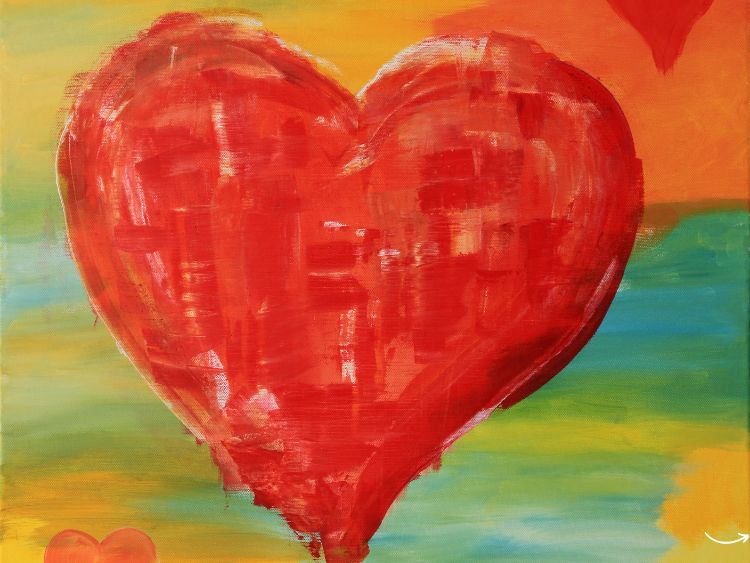Have you ever found yourself captivated by the vibrant and sunny beauty of sunflowers? These golden blooms have inspired countless artists throughout history, from the famed Vincent van Gogh to modern-day creatives. Sunflower painting is a fantastic way to bring a burst of sunshine into your artwork and your life. Whether you’re a seasoned artist or a beginner looking to try your hand at painting, this comprehensive guide will provide you with all the tips, techniques, and inspiration you need to create your very own sunflower masterpiece. So, grab your brushes and let’s dive into the wonderful world of sunflower painting!
The Allure of Sunflower Paintings
Sunflowers have a unique charm that makes them a popular subject for artists. Their large, bright yellow petals and dark centers create a striking contrast that is visually appealing and full of energy. But what makes sunflower paintings so special?
Historical Significance
Sunflowers have been a symbol of adoration and loyalty for centuries. They were revered by the ancient Greeks and symbolized the sun god Helios. In more recent history, Vincent van Gogh’s series of sunflower paintings has become iconic, representing both the beauty of nature and the artist’s emotional depth. These historical connections add a layer of meaning to your artwork, making sunflower painting not just a visual treat but also a tribute to a rich artistic legacy.
Versatility in Art
One of the best things about sunflower painting is its versatility. You can experiment with different styles, from realistic depictions to abstract interpretations. Sunflowers can be the main subject of your painting or a beautiful backdrop for other elements. Their bold colors and distinct shapes make them a joy to paint, regardless of your preferred art style.
Getting Started: Materials and Preparation
Before you start painting sunflowers, it’s essential to gather the right materials and prepare your workspace. Here’s a checklist to get you started:
Materials You’ll Need
- Canvas or Painting Surface: Choose a canvas, canvas board, or any painting surface you prefer. The size is up to you, but a medium-sized canvas is a good starting point.
- Paints: Acrylics, oils, or watercolors can all be used for sunflower painting. Acrylics are great for beginners due to their fast drying time and ease of use. If you’re more experienced, you might enjoy the richness of oils or the fluidity of watercolors.
- Brushes: A variety of brushes, including flat, round, and detail brushes, will help you achieve different effects in your painting.
- Palette: A palette for mixing your colors.
- Water or Solvent: Depending on your choice of paint, have water (for acrylics and watercolors) or a solvent (for oils) handy.
- Rags or Paper Towels: For cleaning brushes and blotting excess paint.
Setting Up Your Workspace
- Choose a Comfortable Space: Make sure you have enough room to move around and that your workspace is well-lit.
- Organize Your Materials: Keep your paints, brushes, and other supplies within easy reach.
- Protect Your Area: Use drop cloths or old newspapers to protect your workspace from paint spills.
Techniques for Painting Sunflowers
Now that you’re all set up, it’s time to start painting! Here are some techniques to help you capture the beauty of sunflowers on canvas.
Sketching the Outline
Begin by lightly sketching the outline of your sunflower with a pencil. Focus on the general shape and placement of the petals and the center. This initial sketch will serve as a guide for your painting.
Blocking in Colors
Start by blocking in the main colors of your sunflower. Use a large brush to apply the base colors of the petals and the center. Don’t worry about details at this stage; the goal is to establish the overall color scheme and composition.
Adding Depth and Detail
Once the base colors are dry, you can start adding depth and detail to your painting. Use smaller brushes to layer different shades of yellow, orange, and brown on the petals. For the center, use a mix of dark browns and blacks to create texture and dimension.
Creating Texture
To give your sunflower painting a realistic look, focus on creating texture. Use short, quick brushstrokes to mimic the natural texture of the petals. For the center, try stippling (dabbing the brush) to create a rough, seed-like texture.
Highlighting and Shading
Adding highlights and shadows will make your sunflower painting pop. Use lighter shades of yellow and white to highlight the edges of the petals that catch the light. For shading, use darker tones to create depth and contrast in the areas that are in shadow.
Inspiration from Famous Sunflower Paintings
Looking at how other artists have approached sunflower painting can provide you with valuable inspiration and insights. Here are a few famous sunflower paintings to spark your creativity:
Vincent van Gogh’s Sunflowers
Perhaps the most famous series of sunflower paintings, Vincent van Gogh’s works are a testament to the emotional power of these blooms. Van Gogh used bold, expressive brushstrokes and vibrant colors to capture the essence of sunflowers, making them come alive on canvas. His approach highlights the beauty of imperfection and the emotional connection between the artist and the subject.
Claude Monet’s Sunflowers
Claude Monet, a master of Impressionism, also painted sunflowers with a distinct style. His use of light and color captures the fleeting beauty of these flowers. Monet’s sunflowers are less detailed than Van Gogh’s but are equally captivating, showcasing the artist’s ability to convey atmosphere and mood.
Contemporary Sunflower Art
Modern artists continue to find inspiration in sunflowers. Contemporary sunflower paintings often incorporate abstract elements, bold color palettes, and mixed media techniques. Exploring these contemporary works can give you new ideas for your sunflower painting and encourage you to experiment with different styles.
Tips for a Successful Sunflower Painting
Creating a stunning sunflower painting takes practice and patience. Here are some tips to help you along the way:
Start with a Strong Composition
A well-composed painting draws the viewer’s eye and creates a sense of balance. Before you start painting, spend some time planning your composition. Consider the placement of your sunflowers, the direction of light, and the overall layout of your painting.
Use Reference Photos
Working from reference photos can help you capture the details and colors of sunflowers more accurately. Take your own photos of sunflowers or find high-quality images online. Pay attention to the lighting, colors, and textures in the photos to guide your painting.
Experiment with Color
Don’t be afraid to experiment with color in your sunflower painting. While sunflowers are typically yellow, you can explore different shades and tones to add interest to your artwork. Try using complementary colors for the background to make your sunflowers stand out even more.
Practice, Practice, Practice
Like any skill, painting improves with practice. Don’t be discouraged if your first few sunflower paintings don’t turn out as expected. Keep practicing and experimenting with different techniques and styles. Over time, you’ll develop your own unique approach to sunflower painting.
FAQs About Sunflower Painting
What type of paint is best for sunflower painting?
Acrylic paints are a great choice for sunflower painting, especially for beginners. They are easy to use, dry quickly, and offer vibrant colors. Oil paints are another excellent option, providing rich textures and deep colors, but they require more time to dry and can be more challenging to work with. Watercolors can also be used for a more delicate and fluid look.
How can I make my sunflower painting look more realistic?
To make your sunflower painting look more realistic, focus on capturing the details and textures of the flowers. Use a variety of brushstrokes to create the texture of the petals and the center. Pay attention to the lighting and shadows, and use a range of colors to add depth and dimension to your painting.
Can I paint sunflowers using a palette knife?
Yes, painting sunflowers with a palette knife can create a unique and textured effect. Palette knife painting allows you to apply thick layers of paint and create bold, expressive strokes. This technique can add a lot of character and dimension to your sunflower painting.
How do I choose the right background for my sunflower painting?
Choosing the right background for your sunflower painting depends on the mood and style you want to achieve. A simple, light-colored background can make the sunflowers stand out, while a more complex background can add depth and context to your painting. Experiment with different background colors and textures to see what works best for your composition.
Summary
Sunflower painting is a delightful and rewarding artistic endeavor. With their vibrant colors and cheerful appearance, sunflowers can bring joy and warmth to any artwork. Whether you’re inspired by the masters like Vincent van Gogh or looking to create your own unique interpretation, the tips and techniques in this guide will help you on your artistic journey. Remember to gather your materials, set up your workspace, and practice different painting techniques to capture the beauty of sunflowers on canvas. Happy painting!
Authoritative Links for Further Reading
- Van Gogh Museum – Sunflowers
- Monet’s Garden – Sunflowers
- Art Techniques for Beginners
- Palette Knife Painting Tips
By incorporating these elements into your sunflower painting, you’ll not only create a beautiful piece of art but also develop your skills and confidence as an artist. So, why not give it a try? Embrace the joy and beauty of sunflower painting, and let your creativity bloom!



